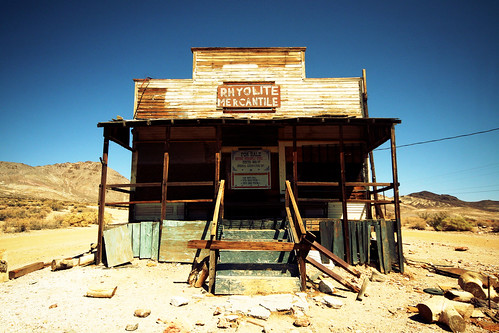On a brief visit to Portland back in April, I had a chance to stop by a pretty cool show at the Museum of Contemporary Craft, titled “Framing: The Art of Jewelry.” Among the pieces that I found most interesting were some by Harriete Estel Berman, a jewelry maker based in California. So I was really pleasantly surprised when Berman coincidentally contacted me a few months later.
After learning a little more about the breadth of her work, which is consistently fascinating both in terms of her actual mastery of craft and materials, and in terms of its thematic exploration of consumer culture.
I immediately figured she’d be a great Q&A subject here, and after some delays that were entirely my fault, I got some questions together for her. Her answers did not disappoint. And here (after another delay that was again my fault) they are. Read on for Berman’s thoughts on advertising language, on where she gets the raw material that she converts into art, about consumer culture and identity, trying to imagine sexy furniture at Ethan Allen, and her take on the impact of Etsy/the DIY scene/the Internet on creators such as herself, so far.
[Plus: It happens that she also has work at a show that opened more recently at the Museum of Contemporary Craft, called Manuf®actured: The Conspicuous Transformation of Everyday Objects, which is up through January 4, 2009 and sounds pretty interesting.]
Q: We’ve been in touch for a while, and I’ve wanted to do this Q&A for a while, but part of what’s slowed me down is that you’ve done so much interesting work and I don’t know where to start. So I’m actually going to start at the end. What are you working on right now — and how does it fit into the general themes you’ve been exploring since (I think I have this right but correct me if not) about 1980.
A: Usually, I am working on several different pieces at the same time, all at different stages of progress. Generally, this is a necessity, as ideas often gestate for months to years or time is needed to collect the right tin cans for a specific idea.

Currently, I am in the middle of a series of work called, Bermaid, the California Collection. (Image above.) These three-dimensional fruit crate labels and bracelets are constructed from recycled tin cans providing layers of images and symbolism. The images and repurposing of post consumer material to construct the fruit crate labels and bracelets reflect upon California as both the archetypal consumer culture and a leader in the recycling movement and green design. Read more
Back in the 1990s I worked as an editor at various personal finance and business publications, and one of the very smartest people I ever crossed paths with was Jason Zweig. So I was very interested in his WSJ column today, not least because of this point countering those who might think we’re headed toward another Great Depression:
When you spend time studying the Crash of 1929 and the depression that followed, what stands out the most is the dearth of doomsayers. Even Roger Babson, the economist known to posterity as “the man who called the crash,” did no such thing; he forecast only a 15% to 20% drop, not the apocalypse that actually occurred. Depressions start not when lots of people are worried about them, as we have today, but when no one is worried about them, as in 1929.
Interesting! Also this:
Furthermore, U.S. nonfinancial companies have just under $1 trillion in cash on their books. Even though Wall Street is dead, innovation is not: In the months to come, clever new financial go-betweens will spring up and find a way to get that cash flowing again. It’s hard to see how a depression could get under way when so much capital is waiting in the wings.
As a counterpoint to the anonymous J, mentioned yesterday, there was an unbelievably gloomy roundtable on This Week Sunday, most interesting to me because in addition to the usual beatdowns to government and Wall Street, the participants went after Main Street consumers.
Here’s a link to the video, but I’ll give you the highlights, or lowlights (with selected bolding to underscore the most interesting stuff). The first 10 minutes or so is boilerplate hemming and hawing about the bailout and craven politicians and all that. Then about halfway through, Washington Post writer Steven Pearlstein said: Read more
I do not pretend to know whether the House should have voted down the bailout today. I do know I’m surprised. And, perhaps, a bit freaked out.
Also, I’m thinking about an absolutely fascinating conversation I had a few days ago, and about the nature of optimism.
The conversation was with a guy I’ll call J. Clearly a very smart guy, J is actually connected to the investing business. I met him on a day when the markets had been pretty nuts a week solid. I was curious what he made of it. The bailout idea had already been floated and the markets seemed to like it. I told him that I understood the basic concept but I didn’t get the details — notably how the government would value these exotic securities it was proposing to buy up. I thought maybe J would have some insight on this and certain other structural issues I find confusing.
Instead, he shrugged. He was almost supernaturally calm, particularly for somebody in his line of work. I wasn’t taking notes but here’s a paraphrase of what he had to say, as I remember it:
I don’t know the details either. Haven’t looked into it. But I’m sure it will be fine. I trust them to come up with the right solution. I trust that they are the right people to do it, and that they understand the details and will do the best things, and that everything will work out.
The truth is, I don’t even vote, because I trust other people to decide which politicians are the best ones to handle whatever problems might come up. And I’m sure that’s happened, and there’s nothing to worry about. Things will work out.
Needless to say, this wasn’t the answer I was expecting. And probably needless to say, this point of view is rather at odds with the way I tend to look at the world.
It gave me pause. Like I said, this guy seemed smart, and he seemed reasonable. I talked to him about a number topics, and he was certainly not an ignorant man, in fact he probably had more facts in his head than I do. (That’s why I’d introduced the topic in the first place.) And he wasn’t being provocative. He was calm, and matter of fact.
Honestly, it kind of made me wish I could see the world the way he does.
 POLITICAL SPECTACLES
POLITICAL SPECTACLES
How Sarah Palin’s glasses fit into electoral aesthetics
Speaking of politics, Consumed this week — in anticipation of the vice presidential debate — is about Sara Palin’s specs: In addition to pondering what it is that’s made people buy Kazuo Kawasaki 704 frames just like the candidate’s, the column puts her apparent style-setting in the context of electoral aesthetics, past and present. Also: Kawasaki’s U.S. distributor suggests a more fashion-forward alternative for Joe Biden.
Read it in the September 28, 2008 issue of The New York Times Magazine, or here.
Consumed archive is here, and FAQ is here. The Times’ Consumed RSS feed is here. Consumed Facebook page is here.
To make a point about Consumed that you think readers of The Times Magazine would be interested in: “Letters should be addressed to Letters to the Editor, Magazine, The New York Times, 620 Eighth Avenue, 6th Floor, New York, N.Y. 10018. The e-mail address is magazine@nytimes.com. All letters should include the writer’s name, address and daytime telephone number. We are unable to acknowledge or return unpublished letters. Letters may be edited for length and clarity.”
What’s the difference between rhetoric and cognitive dissonance?
Both can result in points of view that are so biased that they have no connection to reality. But one involves communicative sleight of hand to mislead the reader/listener, while the other involves a deeper form of dishonesty: Dishonesty with the self.
Murketing.com has no interest whatsoever in influencing your vote. But I think this assessment of last night’s presidential debate offers examples of both rhetoric and congnitive dissonance.
It comes from the Web site of the Weekly Standard, a site I read regularly. It begins with an excellent example of rhetoric: Read more
Here’s an interesting article from last month’s Fast Company about the endorsement of Clorox Green by the Sierra Club. Writer Anya Kamenetz asks: “With no independent scientific assessment of Green Works products, and with an undisclosed amount of money changing hands, what does that Sierra Club seal on the back of the bottle really mean?”
The answer seems to be that it’s meant a lot of internal dissent at the Sierra Club — and strong sales for Green Works. Good story.
In other news, I’m kind of thinking of not doing AntiFriday anymore. Anybody care? It doesn’t seem to have gained any traction.
From The Economist:
The term “emerging markets” dates back to 1981, recalls the man who invented it, Antoine van Agtmael. He was trying to start a “Third-World Equity Fund” to invest in developing-country shares, but his efforts to attract money were being constantly rebuffed.
“Racking my brain, at last I came up with a term that sounded more positive and invigorating: emerging markets. ‘Third world’ suggested stagnation; ‘emerging markets’ suggested progress, uplift and dynamism.”
Interesting story in the WSJ today about trendy reusable shopping bags. These are “the nation’s fastest-growing fashion accessory, with sales this year up 76% to date over last year.”
“Used as they were intended,” the article says, “the totes can be an environmental boon, vastly reducing the number of disposable bags that do wind up in landfills.” In other words, the payoff isn’t in acquiring this particular object, it’s in changing your behavior accordingly. And that’s a lot tougher for people. “At present, many of the bags go unused — remaining stashed instead in consumers’ closets or in the trunks of their cars. Earlier this year, KPIX in San Francisco polled 500 of its television viewers and found that more than half — 58% — said they almost never take reusable cloth shopping bags to the grocery store,” the piece says.
This month at the Stanford Graduate School of Business, marketing professor Baba Shiv dedicated the first day of a weeklong seminar on green marketing to the “road blocks” facing reusable bags. He says it can take “years and decades” for consumers to change their shopping habits, and only when there’s a personal reward or an obvious taboo associated with the change: “Is it taboo yet to be carrying plastic bags? I don’t think so.”
Mr. Shiv also says that according to surveys done by his graduate students, many shoppers say they are less likely to carry a retailer’s branded reusable bag into a competing store. “What these bags are doing is increasing loyalty to the store,” he says.
Following up on this earlier post on “source amnesia,” and the tendency for political (and other) mistruths to “stick”: I guess it’s no surprise the topic is getting attention as the current political season reaches ever-more-absurd levels of frenzy. Braulio sends this item from Very Short List:
Earlier this year, political scientists at Duke and Georgia State described the Bush administration’s claims about Iraqi WMDs to a group of adults, then gave those same people a convincing explanation that Iraq did not, in fact, have a WMD program in the works. How did the people react? Liberals became even more convinced that Iraq had no nuclear or chemical weapons; conservatives became even more certain that it did, with 64 percent of them insisting that Saddam was hiding the evidence.
Basically a classic instance of cognitive dissonance, no? (Subject comes up in Buying In, for whatever that’s worth.)
And today I see Freakonomics links to this Washington Post column on the same subject, mentioning the Duke experiment and others. In one, Yale political science prof John Bullock showed subjects the transcript of a NARAL ad that claimed John Roberts supported “violent fringe groups and a convicted clinic bomber.”
Bullock then showed volunteers a refutation of the ad by abortion-rights supporters. He also told the volunteers that the advocacy group had withdrawn the ad. Although 56 percent of Democrats had originally disapproved of Roberts before hearing the misinformation, 80 percent of Democrats disapproved of the Supreme Court nominee afterward. Upon hearing the refutation, Democratic disapproval of Roberts dropped only to 72 percent.
Republican disapproval of Roberts rose after hearing the misinformation but vanished upon hearing the correct information. The damaging charge, in other words, continued to have an effect even after it was debunked among precisely those people predisposed to buy the bad information in the first place.
The upshot of this and other experiments, The Post’s Shankar Vedantam writes, is that “refutations can strengthen misinformation.” And although I happen to have used an example showing this among Democrats, Vedantam says the tendency is “especially” true “among conservatives.”
“Take a Seat” is described as “an ongoing series of public furniture installations aimed at increasing the availability of seating options in New York City subway stations.” Basically if you spot a discarded chair, you’re encouraged to take it into a subway station. Why? Because most subway stations offer very little seating.
That’s true, although there are some stations where there’s barely enough room to stand at rush hour, and I’m not sure a bunch of chairs would really be helpful. Still, there are plenty of others where that’s not true, and I like the general spirit of the project. Just don’t forget the PATH, y’all.
Via Wooster.
Posted Under:
Q&A
This post was written by Rob Walker on September 25, 2008
Comments (0)
So obviously this site has been quiet for the last several days. That’s because I’ve been away, and now that I’m back, I’m behind.
Meanwhile, maybe you’ve read about this elsewhere, but if you’re following the market turmoil and proposed solutions and so on, I thought this story in The Times about how a similar situation was handled in Sweden a few years back was pretty interesting. So if you haven’t already (and you care about the subject), go read that.
And I’ll be back later.





 "
"


 POLITICAL SPECTACLES
POLITICAL SPECTACLES














 Kim Fellner's book
Kim Fellner's book  A
A